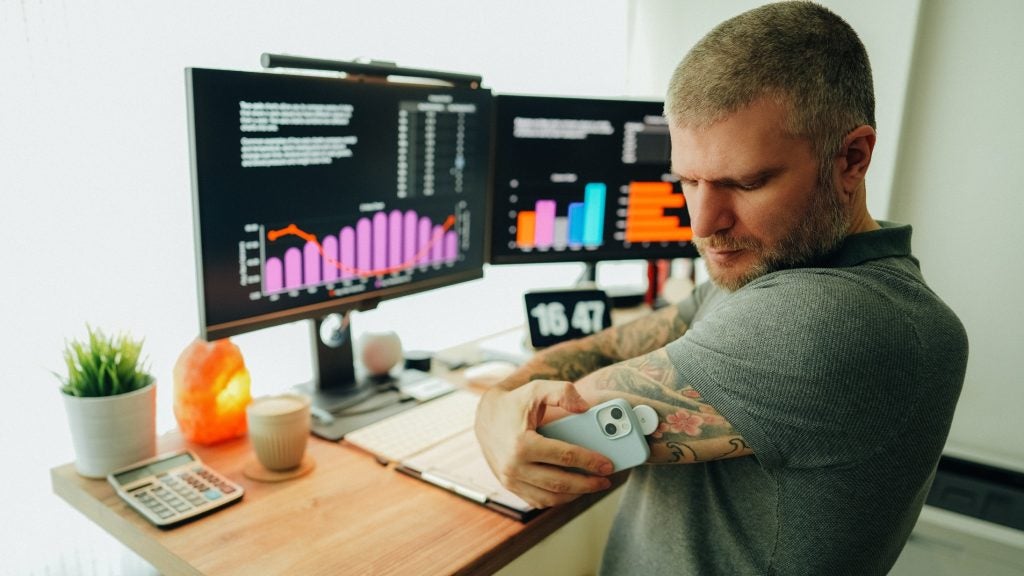The use of artificial intelligence (AI) to diagnose disease is improving every day and helping clinicians save time and human resources. But the early detection for some diseases is particularly critical in influencing patient treatment to save lives.
Chronic Kidney Disease (CKD), which over time deteriorates the function of the kidneys, is extremely common, with 37 million American adults suffering from the condition according to the National Kidney Foundation. CKD patients are also more susceptible to heart disease, which is the biggest killer linked to CKD.
In an exclusive interview with Medical Device Network, James McCullough, chief executive officer of Renalytix, a UK-based developer of AI based decision support and clinical management tools for improving early diagnosis of kidney disease discusses how AI is addressing early detection of kidney disease.
This interview has been edited for clarity and length.

Kiays Khalil: Can you provide an overview of Renalytix and explain your mission?
James McCullough: The challenge that we're addressing is how do you manage chronic disease? This is really the dilemma that all of us face over the next several decades. One of the major complications of diabetes is kidney disease and cardiovascular disease and these are the chronic diseases that drive most of the cost in the global healthcare system and derive an inordinate amount of unnecessary suffering.
Our focus is around introducing prognosis and risk stratification at the front end of chronic disease management. By understanding early on who is at risk, we can take proactive measures to prevent disease progression. Currently, we're starting with chronic kidney disease in patients with diabetes and have received FDA authorisation for our advanced prognosis tool, KidneyIntelX.
KK: Can you explain how you incorporate artificial intelligence into the diagnostic process?
JM: When dealing with early-stage disease risk, especially in conditions like chronic kidney disease, it's essential to have multiple tools to provide an accurate risk assessment. In KidneyIntelX, we use an artificial intelligence-enabled algorithm called "random forest" to provide predictive value early on. However, this is just one component. We also require a blood draw to look for circulating proteins, which serve as biomarkers for kidney disease risk. Additionally, we gather information from a patient's electronic medical record. These elements work together to create a comprehensive picture of a patient's risk level, helping us understand who needs immediate attention.
KK: Can you tell us about the innovative technologies or approaches you're using to monitor kidney disease more effectively?
JM: KidneyIntelX represents a novel approach to early disease prognosis. We've introduced new biomarkers and tackled the challenge of predicting disease progression in chronic kidney disease, which is not a straightforward endpoint like life or death. The innovation lies in the combination of factors such as the artificial intelligence algorithm, biomarkers from a blood draw, and electronic medical record data. This sophisticated approach allows us to provide a clear risk assessment, which we've simplified into a stoplight system (green, yellow, or red) that physicians can easily understand and act upon.
KK: You mentioned some partnerships earlier. Can you name any of these partnerships and provide more details about how they help your mission?
JM: We have established partnerships with several prominent healthcare systems. One of our significant partners is the Mount Sinai Health System, which comprises of eight hospital systems in the New York region. They've also invested in our company and have been instrumental in our development. We're also going live with Atrium Health and Wake Forest later this year, which are even larger than Mount Sinai. In addition to these, we have a pipeline of hospital systems where we plan to integrate KidneyIntelX.
KK: Your stock recently saw a significant increase on June 30th. What was the driving factor behind this change?
JM: The driving factor behind the stock's increase on June 30th was the FDA approval we received. It marked the culmination of a four-year journey to bring KidneyIntelX through the regulatory process. Our breakthrough device designation, the novel components of our technology, and the validation of our approach all contributed to this achievement.
KK: Looking forward, how do you plan to grow and scale operations to reach a broader patient population?
JM: Our growth strategy revolves around three main distribution points. First, we're partnering with hospital systems to integrate KidneyIntelX into their electronic medical record systems, making it accessible to all treating physicians. Second, we're collaborating with insurance companies to address the substantial cost associated with uncontrolled kidney disease and diabetes.
Finally, we're building a direct-to-physician salesforce to focus on specific regions with high rates of diabetes and kidney disease. Additionally, we're partnering with patient advocacy groups like the American Diabetes Association and the National Kidney Foundation to raise awareness and promote our platform.
With all of these substantial milestones achieved, my goal is to get to a 1% market share over the next 35 months. I picked 35 months, because that's a very specific model for us and a 1% market share against a 14 million patient, FDA authorised market in the United States.
KK: You said you want to capture at least 1% of the market. How do you plan to achieve this?
JM: There are other people that have algorithms that are out there. None of them have biomarkers, which I think is essential. You've got to take a blood draw and you have to have biomarkers if you want to get into consistent early-stage prognosis - this is precision medicine.
I don't see anybody else anywhere near a regulated process through the FDA. It takes a lot of sweat, and a lot of data. It took us over four years to get through the FDA, and the challenges that the FDA presented to us were very good challenges.
KK: Looking at Covid-19 and the impact it had on kidney health, is this something KidneyIntelX can tackle?
JM: You need to understand disease risk early, especially in the chronic kidney disease condition. It's not just kidney disease, you must understand early what the risk profile is, and you have to do it with accuracy, reliability, and safety.
We now have a considerable population of patients with long Covid and we're probably not done with it. We're seeing the wave rolling through and Covid uses some of the same pathways that are evolved and implicated in kidney disease progression.
It's very important that we can understand early who is at risk, especially in the population that is north of 60 years old. This is where we see a lot of the mortality. And when we're introducing drug therapies, we want to understand how these things impact kidney disease health. We need to shine a spotlight on the kidney as an organ, understanding its function, its health, its susceptibility to function, decline based on therapeutic intervention, clinical intervention, disease, intervention, all these things are what we're doing now with KidneyIntelX in a regulated, safe, reliable, and effective manner that's paid for by insurance. That's how you start to establish ultimately a new standard of care, which physicians can depend upon. And use in the clinic active with Covid-19 is one example of a place where KidneyIntelX can play an essential role in managing these patients.
KK: Are there any plans to expand your technology to other diseases or organs in the future?
JM: KidneyIntelX is a platform that can be applied to other chronic diseases and organs. Our focus has been on kidney disease, but the principles and innovations we've developed are transferable. Understanding early-stage disease risk is crucial in many chronic conditions, and our goal is to expand our platform to address these areas in the future.















